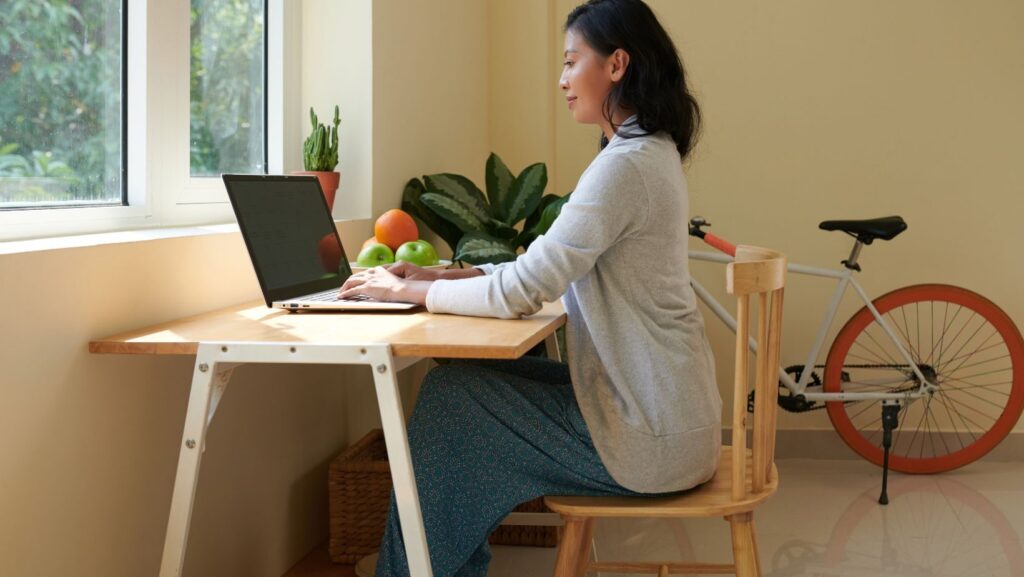Discover the importance of elderly seating solutions in promoting health and well-being. Learn how proper chairs reduce pain, improve posture, and enhance senior independence.
also read:https://www.thehealthyprimateorgs.com/how-holistic-approaches-enhance-long-term-sobriety-success/
Introduction
As people age, their physical needs and comfort preferences evolve significantly. One of the most overlooked yet crucial aspects of senior care is seating. Elderly seating solutions are designed specifically to prioritize health, comfort, mobility, and overall well-being. They are not just pieces of furniture; they are tools for improving quality of life, preventing health issues, and encouraging independence. In this article, we’ll explore the various types of elderly seating solutions, their health benefits, what to consider when choosing one, and how they contribute to senior wellness.
Understanding the Need for Specialized Elderly Seating
As the body ages, muscles weaken, joints stiffen, and maintaining posture becomes more difficult. These changes increase the risk of falls, joint pain, back strain, and even pressure sores. Traditional chairs, sofas, and stools often lack the ergonomic support seniors need. This is where elderly seating solutions come in — they are designed with thoughtful features like firm cushions, lumbar support, easy height access, non-slip bases, and recline options that make sitting and standing easier.

Moreover, prolonged sitting in unsupportive chairs can cause poor circulation, spinal issues, and pressure ulcers. A well-designed seating solution can prevent these problems and significantly improve a senior’s daily comfort and safety.
Health Benefits of Elderly Seating Solutions
A specialized seating arrangement for the elderly offers numerous health advantages. These benefits are both physical and psychological:
1. Improved Posture and Spinal Health

Ergonomically designed chairs support the lumbar spine, help maintain proper posture, and reduce pressure on the back. This is particularly important for seniors with arthritis, osteoporosis, or chronic back pain.
2. Reduced Risk of Pressure Sores
Seating solutions made with memory foam or pressure-relieving materials help distribute body weight evenly. This reduces the risk of developing pressure ulcers, especially for individuals who are immobile for long periods.
3. Enhanced Blood Circulation
Many elderly seating options allow for adjustable angles and leg elevation. This helps in improving blood flow, particularly in the lower limbs, which is vital in preventing swelling and deep vein thrombosis.
4. Safer Mobility
Chairs with armrests, stable bases, and adjustable heights aid seniors in standing up and sitting down without straining their joints. This independence also reduces fall risks and fosters confidence.
5. Mental Well-Being
Comfortable seating encourages social interaction, reading, and relaxation. This promotes emotional well-being and decreases the likelihood of isolation and depression among the elderly.
Types of Elderly Seating Solutions
There is no one-size-fits-all when it comes to elderly seating. Different health conditions and preferences require tailored seating arrangements. Below is a table summarizing common types of seating and their main features:
| Type of Seating Solution | Description | Ideal For |
|---|---|---|
| Lift Chairs | Powered to tilt forward and assist in standing | Seniors with low mobility |
| Recliner Chairs | Adjustable back and footrest with soft cushioning | Relaxation and circulation |
| Wheelchair Seating | Custom cushions and support for wheelchair users | Long-term immobility |
| Dining Chairs with Arms | Stable, upright, with armrests | Mealtimes and table tasks |
| Shower Seats | Waterproof, anti-slip, often with handles | Bath safety and hygiene |
| Stair Lift Chairs | Mechanized chairs installed on stairs | Multi-story home access |
| Portable Seat Cushions | Can be placed on any chair to improve comfort | Travel or short-term use |
Each type caters to different needs. For example, a recliner may not be suitable for someone who requires firm support to stand, whereas a lift chair is ideal in such cases.
Key Features to Consider When Buying Elderly Seating
When purchasing a seating solution for an elderly individual, several important factors must be considered to ensure the product meets their unique health and comfort needs:
Height and Depth
The chair height should allow the user’s feet to rest flat on the floor. The depth must support the back without cutting off circulation in the thighs.
Cushioning
Memory foam and high-density foam cushions are preferable as they offer pressure relief and long-term comfort.
Back and Lumbar Support
Chairs with adjustable lumbar support can accommodate different postures and spine curves.
Armrests
Sturdy and well-positioned armrests assist in rising and sitting, making them essential for elderly users.
Non-Slip Base
A non-slip base ensures the chair remains stable during use, reducing the chance of accidental tipping or sliding.
Material
Choose materials that are easy to clean, breathable, and resistant to wear and tear. Leather, vinyl, and antimicrobial fabrics are often preferred.
Adjustability
Reclining options, height adjustments, and footrest controls allow the user to customize their seating experience based on daily needs.
Why Elderly Seating Should Be a Healthcare Priority
Comfortable and functional seating should be an essential part of any elderly care plan. Whether aging at home or in a facility, proper seating aids in maintaining independence, reduces caregiver burden, and supports a healthier lifestyle.
Investing in elderly seating solutions is especially vital for individuals recovering from surgery, living with chronic illness, or who spend long hours in a seated position. Beyond physical benefits, these solutions provide dignity and enhance daily routines by empowering seniors to do more on their own.
Role of Caregivers in Seating Support
Caregivers, whether professional or family, must be aware of the seating needs of the elderly. They play a key role in:

- Monitoring comfort levels and physical reactions during use.
- Assisting with adjustments and maintenance of seating equipment.
- Encouraging the senior to use appropriate chairs based on activities (e.g., dining, watching TV, bathing).
- Coordinating with physiotherapists or occupational therapists for specialized seating recommendations.
Creating a holistic care plan with attention to proper seating can drastically improve a senior’s quality of life and prevent avoidable complications.
Common Mistakes to Avoid When Choosing Elderly Seating
Even with the best intentions, common mistakes can hinder the effectiveness of elderly seating:
- Choosing Aesthetic Over Functionality – A chair may look good but offer poor support.
- Ignoring Adjustable Features – Not using or selecting adjustable models limits comfort.
- Overlooking Room Space – Ensure the chair fits comfortably in the living space.
- Buying Without a Trial – Testing the seat ensures it meets personal comfort levels.
- Neglecting Weight Capacity – Exceeding weight limits can compromise safety.
Future Innovations in Elderly Seating
With advancements in technology and ergonomic science, elderly seating continues to evolve. The future may include:
- Smart sensors that alert caregivers to pressure build-up.
- AI-driven recliners that learn user habits and adapt posture.
- Portable motorized seats for mobility on-the-go.
- Eco-friendly and biodegradable materials for sustainability.
Such innovations will not only enhance comfort but also integrate health monitoring for proactive care.
FAQs on Elderly Seating Solutions
1. Can elderly seating solutions be covered by insurance?
Yes, some medically necessary chairs, like lift chairs, may be partially covered under Medicare or private insurance plans.
2. How often should elderly seating cushions be replaced?
Typically every 1-2 years, or sooner if the cushion loses its shape or support.
3. Are there eco-friendly elderly chairs available?
Yes, some manufacturers offer sustainable seating made from recycled or biodegradable materials.
4. Can smart home systems integrate with seating solutions?
Yes, advanced chairs now come with IoT features that integrate with smart homes for voice control and health tracking.
5. What’s the best seating solution for arthritis patients?
Lift chairs with heat and massage functions are ideal for joint pain relief.
6. Is it safe for seniors to sleep in recliner chairs?
Yes, if the chair supports proper spinal alignment and offers adequate cushioning, it can be safe for short naps or recovery.
7. Do all seating solutions require professional installation?
Not all. Portable cushions and basic chairs do not, but stair lifts and some motorized recliners might.
8. Can I rent elderly seating equipment instead of buying?
Yes, many home healthcare providers offer rental services for short-term needs.
9. Are there waterproof options for outdoor elderly seating?
Yes, outdoor-specific chairs with UV and water-resistant materials are available for patios and gardens.
10. What’s the difference between bariatric and standard elderly seating?
Bariatric chairs are designed to support higher weight capacities and provide extra space and reinforcement.
Conclusion
In conclusion, elderly seating solutions: prioritizing health and well-being is more than just a matter of furniture preference. It’s about enhancing comfort, safety, independence, and dignity for our aging population. With careful selection and the right features, a seating solution can dramatically improve a senior’s life — physically and emotionally. From recliners to lift chairs and ergonomic dining seats, these tools are essential for healthier aging. As caregivers and family members, investing in suitable seating isn’t just a purchase — it’s a meaningful step toward better quality of life for our elders.
also read: https://www.thehealthyprimateorgs.com/filing-a-veteran-disability-claim-for-mental-health-disorders/
also read:https://www.thehealthyprimateorgs.com/typical-health-problems-in-personal-injury-lawsuits/